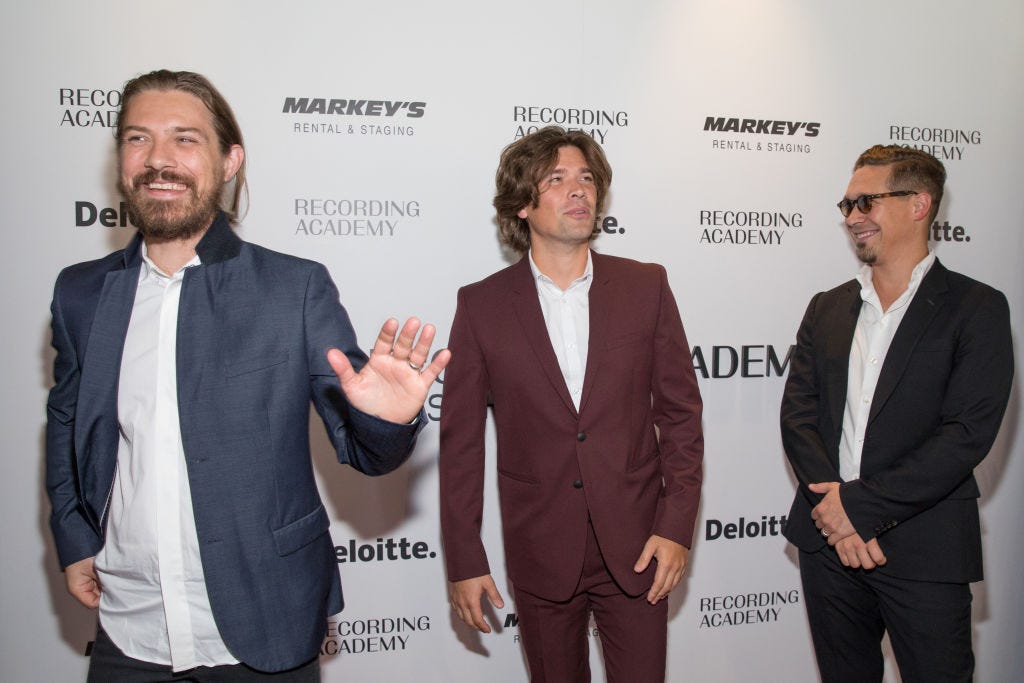The band that brought the world “MMMBop” also created the first massive web-native superfan club—which continues to pay dividends today.
It’s hard to comprehend the enormity of Hanson’s 1997 smash “MMMBop” in today’s content-stuffed world. Back then, that one song topped charts in 27 countries simultaneously and turned three brothers from Oklahoma into superstars overnight.
Given the tune’s undeniable virality, it’s even harder to comprehend how little Hanson’s label cared about the band’s web presence.
“They were like, ‘Internet, schminternet’ … nobody had any interest whatsoever when that started,” Taylor Hanson tells me. “So we basically began to develop a direct-to-fan membership fan club and active public website without any hindrances, without any engagement from the label.”
By 1999, the band had launched Hanson.net, a paid-membership portal that gave users all sorts of exclusive content. They received their own “@hanson.net” email accounts and congregated in semi-private online spaces. And these fans—superfans, that is—even had the ability to make their own web sites and profile pages.
In other words, Hanson created something like a social network, years ahead of Myspace, well before Mark Zuckerberg even got his driver’s license. And none of the band’s corporate overlords tried to come in and gobble it up.
“There was a moment where this emerging possibility was there, where the industry that was the most fragile—music—could’ve adopted this new way of talking to people,” Taylor tells me. “But because it’s been dominated by a corporate power structure … they’re thinking in quarters, they’re thinking in stock prices … they don’t have any R&D happening.”
 Taylor, Zac and Isaac Hanson (left to right), all grown up … and still rocking (Photo by Rick Kern/Getty Images)
Taylor, Zac and Isaac Hanson (left to right), all grown up … and still rocking (Photo by Rick Kern/Getty Images)That sort of corporate myopia served Hanson well, enabling the brothers to build out their fan club without undue encumbrance. Critically, this growing web presence allowed the them to keep building their brand and connecting with audiences all around the world.
To be sure, many bands built thriving direct-to-consumer businesses even earlier. The Grateful Dead pulled it off with hard ticket sales starting in the 1980s and Radiohead did it with online profiles in the early 1990s. Indeed, a handful of acts used email databases and listservs to connect with fans in those days. But Hanson was perhaps the first to do so at a grand scale through the world wide web.
Then the shine of “MMMBop” wore off, and record companies didn’t know what to do with a bunch of long-haired teenagers from Tulsa singing Motown-style songs. And, at the time, the labels were too consumed with buying and selling each other to figure it out.
Eventually Hanson got offloaded onto Island Def Jam, and it seemed the group was at risk of being lost in the shuffle alongside acts like Jay-Z and DMX. But the brothers had a major advantage: they weren’t locked into an all-encompassing deal.
“Now, if you sign a deal to any major company … people are doing 360,” says Taylor. “The label’s trying to take a piece of the record, a piece of the touring, a piece of the merch. And a lot of times they’re grabbing the ownership of the URL, the likely website URL, which is really scary for the band.”
Rather than fall into record label purgatory as an eternal afterthought, Hanson went independent shortly after the turn of the Millennium. And why not? The group had direct access to its audience, as well a measure of built-in financial stability through the fan club (which costs $40 for a one-year subscription).
So, when Facebook and its ilk arrived, Hanson didn’t feel pressure to give away exclusive content in hopes of monetizing down the line, as so many others now do. The brothers had their own social network, with an audience willing to compensate them for their creative output.
Hanson also had access to details most bands didn’t, particularly when it came to the makeup of its superfan base. The band could see who ordered the most merch, which cities they lived in, and more. Such information played a crucial part in devising tour schedules, allowing the band to concentrate its earning power.
“We actually knew that we have this many fans in Israel, we knew that we have this many fans in Sweden,” says Taylor. “They’re going to show up at the radio station, they’re going to the show. Leveraging that is always really hard, but we basically had a picture, for the first time in modern history, of a kind of real time engagement metric.”
And it worked. Unlike so many bands doomed to the annals of history, Hanson has continued to record, tour and innovate—all independently. Hanson still packs rooms like the 2,900-seat Beacon Theater in New York, and does even better abroad, playing to crowds of 6,000-7,000 in South America and Australia.
In addition to touring constantly (in the Before Times, anyway) and putting out new records regularly, Hanson launched its own Mmmhops beer and Hop Jam festival. And, after a cancellation last year due to the pandemic, Hanson.net members can once again join the group for an annual weeklong event in Jamaica this winter.
“We’re a band that can play most places in the world,” says Taylor. “It’s a strong global fan base, but the amount of engagement that we see from that fan base is exponentially higher than the average band.”
That’s because Hanson doesn’t just have a fan base, it has a superfan base, one with clear lines of communication for maintaining and monetizing the relationship. And all entrepreneurs can draw inspiration from this playbook—whether they helped invent social media or not.